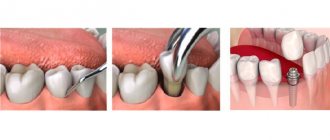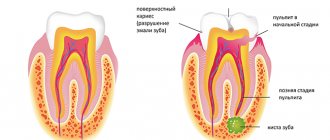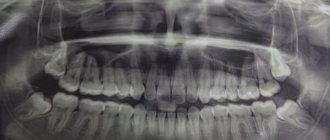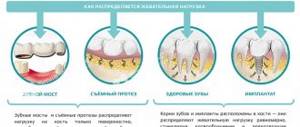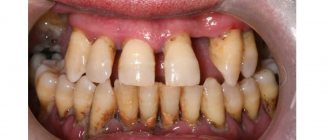As a result of poor-quality root canal filling, an inflammatory process often occurs due to infection, which leads to the formation of a cyst or granuloma. In this case, the dentist prescribes a cystectomy with resection of the root apex. It is important to note that this surgery aims to preserve the tooth rather than remove it.
What is a cyst/granuloma?
Our body is constantly forced to repel attacks from various harmful viruses and bacteria. Therefore, over many years of evolution, a whole system of protective functions has been created, and the formation of a cyst is one of them. When an infection enters the root canal of a tooth, it provides favorable conditions for the rapid growth of bacteria and their spread to healthy tissue. To prevent this process, the infected area begins to thicken, thus creating a barrier around the affected area in which dead cells and harmful microorganisms remain. If such a lesion is more than 1 cm in diameter, it is a radicular cyst; if less, such a formation is called a granuloma or cystogranuloma.
Most often, the disease is the result of improper endodontic treatment, that is, root canals, but infection is possible due to injuries received by a person or infectious diseases such as sinusitis.
Content:
- What is a cyst/granuloma?
- Cystectomy as a way to save a tooth
- Root apex resection
- Therapeutic treatment of cyst/granuloma
- Laser cyst removal
In most cases, a person does not experience any discomfort and is not aware of the tumor. This can lead to a worsening of the disease, in which not only the epithelium is affected, but also the bone, and the tooth becomes impossible to save due to complete destruction or severe loosening. The only way to detect a cyst at an early stage is an x-ray.
At the same time, dentists recommend paying attention to discomfort when eating solid food, darkening of the tooth or its slight displacement. Such symptoms may indicate the presence of a cyst in the oral cavity. If the inflammation is at an advanced stage, a purulent fistula forms and pain is present. It is also possible to have an increase in temperature, enlarged lymph nodes, and general malaise.
What to do during the recovery period
After surgery, swelling, pain, and inflammation may be observed in the area of the gum where the cyst was removed. If the patient conscientiously follows the doctor’s recommendations, the symptoms will disappear after a short period of time. To avoid negative consequences and re-development of the disease, the doctor recommends following some rules:
- To brush your teeth, you need to purchase a brush that will not cause bleeding or irritation of the gums.
- The diet that must be followed during the recovery period should not include solid, overly hot or cold foods. In addition, avoid consuming foods that are not capable of causing irritation of soft tissue, which, in turn, will cause a re-inflammation process.
- The patient should give up bad habits that can negatively affect the integrity of the teeth and soft tissue after cystectomy. It is not recommended to smoke or drink alcoholic beverages.
- It is necessary not to take medications that can cause an allergic reaction or are included in the list of other contraindications. With such a reaction of the body, the structure of the teeth and soft tissues will be disrupted.
If the patient carefully follows all medical recommendations, the risk of re-formation of the cyst and inflammation will be reduced.
Cystectomy as a way to save a tooth
After carrying out the necessary diagnostics and having an x-ray, the dentist will be able to assess the extent of tissue damage. To eliminate the problem and ensure the safety of the tooth, the doctor most often decides to perform a cystectomy - an operation to remove the cyst.
Indications for this are:
- large size of the infected sac;
- location in the area of two or more teeth;
- the neoplasm occurred due to a malformation of the epithelium;
- the cyst is located in the area where the tooth is missing;
- the integrity of the jaw bones is compromised.
The complexity of the procedure lies in the fact that it is necessary to eliminate even the smallest particles of infected tissue. If the work done poorly by the dental surgeon and the presence of at least a minimal number of cyst cells, the patient will experience a relapse of the disease.
Difference between cystectomy and cystomy
There are some differences between cystectomy and cystotomy.
When a cystectomy is performed, the cyst is completely removed. This surgical intervention is performed if the formation is large or covers several teeth at once. Moreover, both jaws have a thickness that makes it possible to carry out surgical manipulation.
In the case of cystotomy, not the entire cyst is removed, but only its anterior wall. The remaining part is connected to the oral cavity.
Root apex resection
If the cyst is located at the edge of the root, then in addition to the membrane and internal fluid, its upper part is usually removed to prevent further proliferation of microorganisms and their penetration into the deeper layers of tissue. This procedure is called resection. It is important that at the time of the operation there is no active inflammatory process, for example, inflammation of the gums and pain during palpation.
The main stages of the operation can be divided into three parts:
- providing access to the hearth;
- cyst removal and tooth resection;
- suturing.
After an incision is made in the area of the top of the affected tooth, the gum moves back, allowing access to the bone tissue. Using a drill, the surgeon drills a “window” that allows access to the cyst or granuloma and cleaning. The next step is to cut off the top of the root.
The most modern techniques also involve “retrograde root canal filling” after resection. This will be especially beneficial for people whose root canals were filled long ago, but there is no need to redo them before undergoing a cystectomy. Often the dentist makes such a decision when a crown is installed on a tooth, and the planned operation will lead to repeated prosthetics and an increase in the final cost. The procedure itself involves additional filling of the upper part of the root canal on the cut-off side. Thus, a specialist, using an ultrasonic attachment, removes the filling to a depth of 2 mm from the cut site, after which the canal is obturated with a special material. This allows you to almost completely eliminate the risk of re-infection.
The final stage of cystectomy with resection of the upper dental root is filling the resulting hole with artificial bone material, which over time promotes the regeneration of the patient’s own bone cells. The final touch is to sew the gums into place.
The operation itself is not complicated for a specialist and is performed under local anesthesia. During the procedure, the patient will not feel anything, but after the anesthesia wears off, you will need to take analgesics to reduce pain.
When not to have surgery
There are some factors, the presence of which is a contraindication to dental cystectomy; the price is about 7,000 rubles. These include:
- If the purulent tumor has reached a large size, under the influence of which several elements of the dentition have fallen, as a result their structure has been disrupted, suppuration and the inflammatory process have begun.
- If a patient is diagnosed with an infectious disease or inflammation, which has caused the destruction of the structure of the teeth, their loosening, as a result, periodontitis or periodontal disease begins to develop.
- For oncological or endocrine disease, the occurrence of which is associated with an inflammatory process in the gum or tooth root. These diseases include leukemia, sarcoma, and diabetes.
- When the tooth crown is destroyed, blackened, resulting in suppuration. Causes include infectious disease and bad habits in humans.
Therapeutic treatment of cyst/granuloma
Do not be afraid to go to the doctor if you suspect that you fall under the described symptoms of a cyst. Firstly, only x-rays can accurately show whether this is actually the case; secondly, the sooner you see a dentist, the higher the chances that you can do without surgery. Extreme measures are resorted to only when therapeutic treatment has not brought the desired result, or the source of inflammation is in an advanced stage.
However, there is no guarantee that the treatment will have a positive outcome and that surgery will not be necessary. In addition, this process is long and has many stages. To reduce and resolve a cyst or granuloma, the source of infection must be neutralized. At this stage, the doctor works with the root canals: if they have not been sealed, he removes the pulp and carries out treatment; if fillings have been installed, he removes and rinses the canal with an antiseptic.
After this, the doctor installs a temporary medicated filling paste based on calcium hydroxide for several months. To determine the effectiveness of therapy, it is necessary to take another x-ray. In case of successful treatment and reduction of the source of inflammation, the patient will receive a permanent filling.
Best materials of the month
- Coronaviruses: SARS-CoV-2 (COVID-19)
- Antibiotics for the prevention and treatment of COVID-19: how effective are they?
- The most common "office" diseases
- Does vodka kill coronavirus?
- How to stay alive on our roads?
Stages of cystectomy
- Examination of the patient's oral cavity, photograph of the damaged area.
- Local anesthesia.
- The actual procedure of dental cystotomy. Cutting and peeling of the gums.
- Removal of a section of jaw bone for better access to the cyst.
- Cleaning out the contents of the capsule and removing its shell.
- Rinse the cavity with an antiseptic solution.
- If necessary, eliminate the damaged root area and retrograde filling or tooth extraction.
- Filling the resulting empty cavity with osteoplastic material (artificial bone tissue).
- Stitching.
Laser cyst removal
Science does not stand still, and now there are methods for eliminating an infected sac without unpleasant incisions and long-term treatment. Laser tumor removal has a number of advantages. So, if there is no need to remove nerves, the procedure takes place without painkillers, as it is completely painless. In addition, the laser has an antiseptic and regenerating effect, no bleeding and minimizing complications. Most often, the doctor can close the root canal with a filling immediately after the manipulation.
This procedure involves opening the canals, for which the filling is removed from the tooth, after which a laser is inserted there. The beam is directed at the cyst and destroys all microorganisms. Naturally, such a procedure will cost the patient more. It is also worth considering that if the formation continues to increase after the procedure, you will still have to resort to cystectomy with resection of the apex of the tooth root.
More fresh and relevant information about health on our Telegram channel. Subscribe: https://t.me/foodandhealthru
We will be grateful if you use the buttons:
Problems solved by cystotomy of a dental cyst
A cystic formation is a capsule with pathological fluid that is localized around the root. The composition of its contents is pathogens and dead cells. Cystotomy does not remove it; its task is to minimize the pressure inside its cavity, due to which it gradually flattens and can completely or partially resolve. The cyst itself is a source of infection that can provoke a number of serious complications:
- Involvement of healthy tissues in the pathological process;
- Destruction of jaw tissue around the tooth;
- Formation of fistulas;
- Development of abscesses.
Moreover: dentists note that there is a risk of degeneration of the cystic formation into a neoplasm of a malignant nature.
